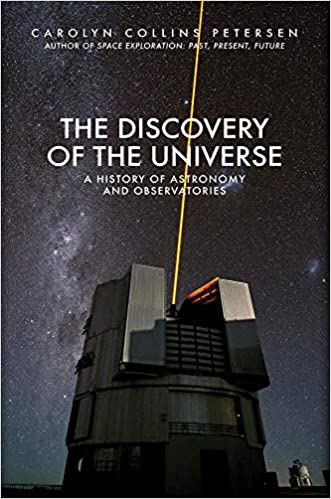The Discovery of the Universe: A History of Astronomy and Observatories (published 2019 by Amberley Publishing) is a wide ranging book covering astronomy and astronomers from pre-history to the current day. Through eight chapters the author digs deep into the science being pursued by astronomers and physicists today, as well as discussing the history of observatories and telescopes.
The first chapter goes into the basics of what science is being done and how telescopes and observatories of many different types are used. It covers a lot of ground, with a focus on how new instruments and special equipment from space telescopes and more are used and how they fit together in modern research.
The second chapter goes into early astronomy and how it was used for navigation, seasonal events such as times to plant or to hold religious festivals, to astrology and the influence early astronomers had with their cultures and leaders. It also covers early telescopes and their use. Galileo, Tycho Brahe, Huygens, Kepler and Newton are of course mentioned here and discussed, with their advances in telescope designs and their use.
Each chapter following continues the story to the present day and beyond, including the stories of many of the great telescopes of the 19th and 20th centuries, then on to space-based telescopes and unusual instruments designed to detect neutrinos and gravitational waves.
The book finishes with a discussion of planned and dreamed-of future instruments and finally with a chapter dedicated to amateur astronomy, education and popular culture. Here there is a fair reference guide to public observatories and online resources.
I’ve found the book really enjoyable, though I’m still working my way through it. It’s become my favorite late-night read recently. I can recommend it for a good general guide to astronomical research and it’s history. You can purchase it through a book store or as a Kindle or the Apple Books store if you prefer a digital version. I personally enjoy the hardcover book itself, as the photographs tend to be fuzzy and undersized in the digital version.
